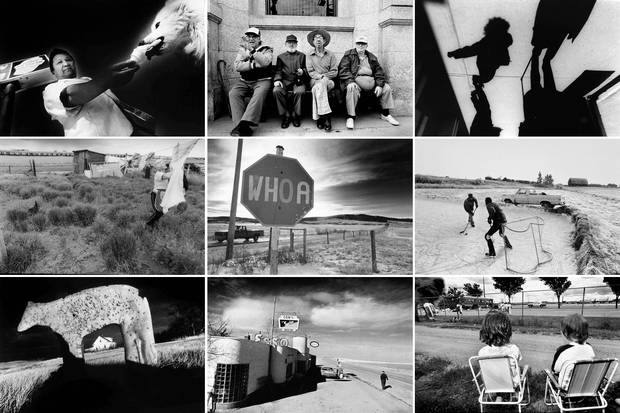Like so many Canadian journalists, my first staff position on a daily newspaper was at the Moose Jaw Times-Herald. It was 1989 – pre-internet, pre-word processor, pre-computer graphics, pre-colour in print, pre- so many things.
My first day on the job, I remember walking out onto the "Golden Mile." There wasn't a soul in sight. The air was a Saskatchewan dry kind of February air. I felt a scratching at the back of my leg and looked down. A tumbleweed – an actual tumbleweed – was trying to roll past and I was was the only thing between it and who knows where.
My time as photographer at the Times-Herald was an intense blip in its 128-year history. Never before and never again would I be given such licence to scour the streets, comb the countryside and mine the tenement houses for content, characters and their stories.
If I came across a "winner" I'd rush back to the newsroom, process my HP5 film in warm water (to speed up the job) and crank out a quick 8x10 in the darkroom. While it dried, I'd hammer out an info line with a typewriter that often skipped the letter "I" (very inconvenient since most words contain an "I"). Using a pair of black metal scissors, I'd literally cut out the cutline and glue it to the water-spotted print, put that into a manilla envelope, lick a stamp and send it on to The Canadian Press before 4 p.m. in hopes of meeting the next day's deadline.
Oh, the irony of such hustle! My images were anything but time-sensitive. They actually made time stand still – as though the Earth's axis forgot to spin Moose Jaw with the rest of the world. But they received a lot of play, with comments from editors ranging from "Is this real?" to "How can we not print this stuff?"
During my short tenure on the prairies, I drove hundreds of kilometres down dusty roads in either the Times-Herald's rusty red Hyundai Pony or my old Plymouth Valiant. (I photographed on my days off, too.) In the winter, it was so cold the tires went square if the car was left to sit longer than it took a cup of coffee to cool. These sojourns led me to love images of rural farm life and ultimately led me to become a farmer myself.
I owe so much to my experience at the Times-Herald. Everything I've become started there in earnest, and I was sad beyond words to learn about the demise of my alma mater. The last edition was published on Dec. 6. I only wish I could have been there to lift a plastic glass of cheap chablis with the last remaining staff before they closed the doors on a Canadian icon. If I could reclaim that gorgeous neon sign that marks the front door, I'd drive it down the road and plant it in my favourite field near Assiniboia for the tall grass to wave at.
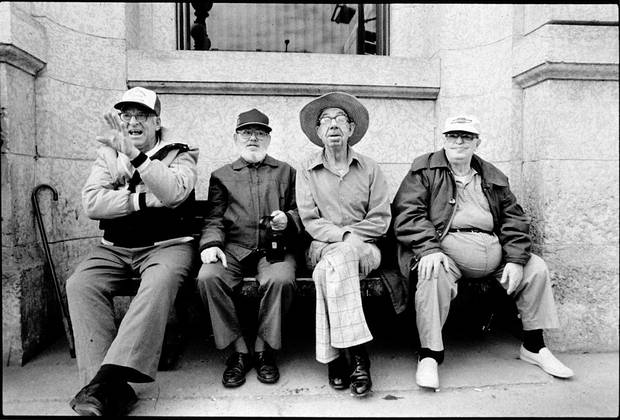
The bench in front of City Hall in Moose Jaw was a popular place to sit. These characters happened to be on the bench watching a parade go by. This became a popular photo because everyone seems to know a friend or relative who ‘looks like one of these guys.’ This image ran across the country in numerous papers.
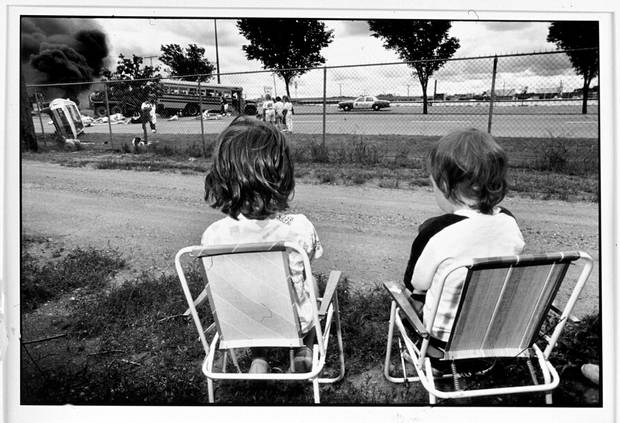
Front Row Seats at the Accident, Moose Jaw, Sask., 1990. Hard news events were few and far between in Moose Jaw. This mock disaster became as close as it gets to what the ‘big city’ newspaper photographers would cover. The Canadian Press loved this one. Citizens of Moose Jaw did not.
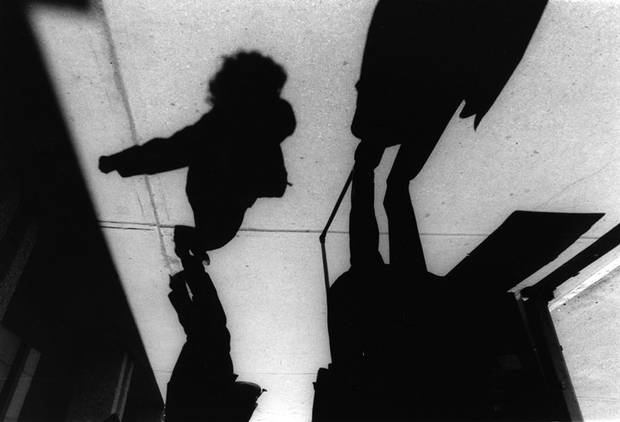
Street Shadows, Moose Jaw, Sask., 1990. My Saturday photo column featured a series of abstract images, often shadows that seemed suspended. As a newspaper photographer, it was unique to be given creative license of this nature. I thought that since writers were given columns, so should I. My series, Sidetracks, gained a following and the pictures were often cut out and put in scrapbooks.
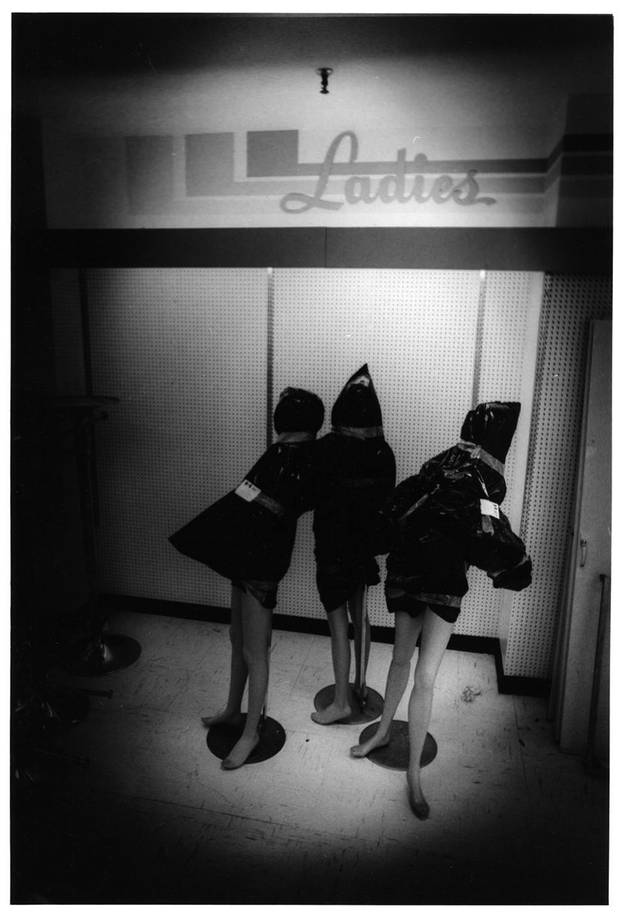
Three Ladies, Moose Jaw Sask., 1990. The old Army & Navy department store on Moose Jaw’s Main street was like a museum of modern history. At the time, these three mannequins made me think of a scene from a gas chamber. Macabre images like this one ran in my Saturday photo column Sidetracks, not without some criticism.
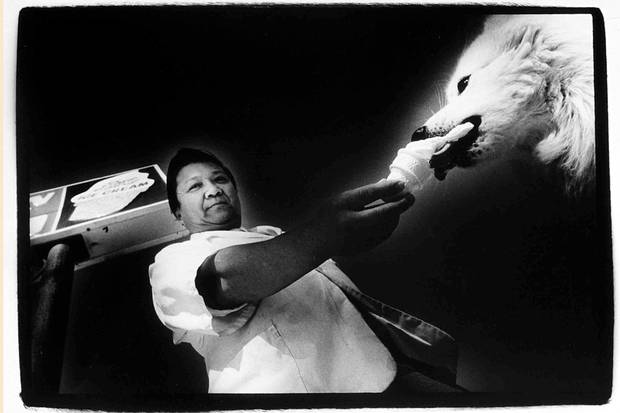
Ice Cream, Moose Jaw, Sask., 1990. I was asked to come up with a weather shot on a spring day. The editors were confused and a bit put off when I came back with this one. It did run on the Canadian Press wire, which made the Moose Jaw editors even a bit more miffed. I found the eye contact with the camera very strange – not your typical and expected ‘smiling kid with an ice cream’ cliché.
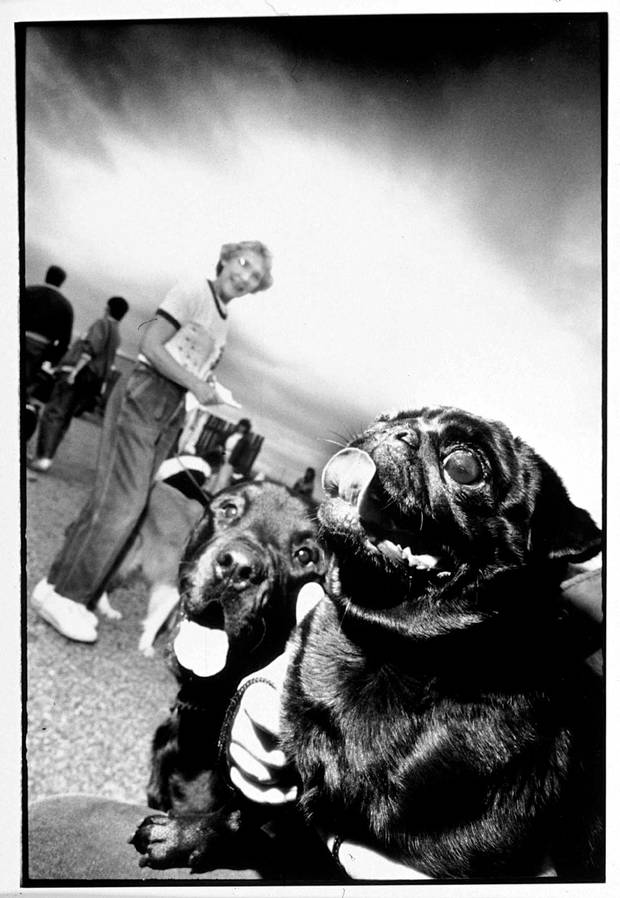
Dog Show Contestants, Moose Jaw, Sask., 1990. On assignment to photograph a local dog show competition, I came across these two. I loved the gremlin-like face of the pug who dwarfs the great dane in the background. Add some hard electronic flash and things get spooky. This one also ran in Sidetracks.
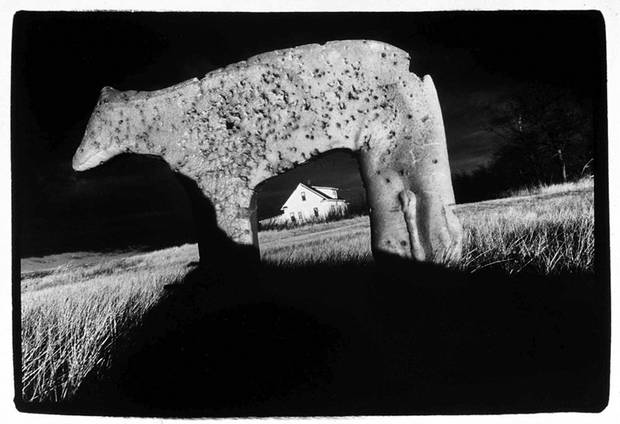
Prairie Dog, Moose Jaw, Sask., 1990. It was expected that newspapers answered the 5 ‘w’s.’ Conversely, I loved making readers ask questions like ‘What is that?’ I won’t tell you what this is – just take it in as part of a Prairie landscape.
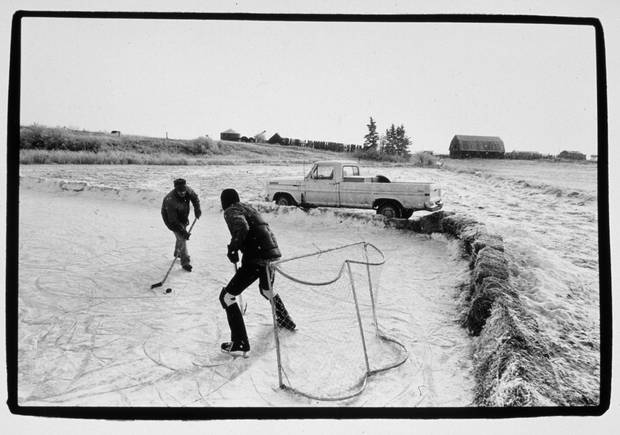
Iconic images like this one were commonplace in the Prairies. All you had to do was take the time to stop. This picture had it all – two old friends, the old Lange skates, a hand-hewn rink rimmed in hay bales – what could be better?
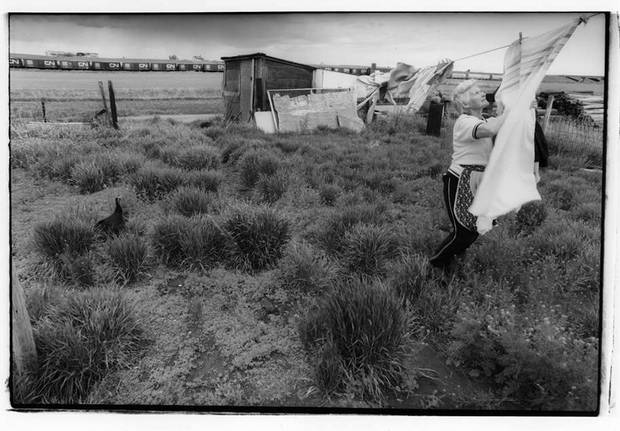
Laundry Day, Moose Jaw, Sask., 1990. I loved roaming the countryside looking for pictures of daily life. I felt there was extraordinary in the ordinary as simple scenes played out before me. It was important to include subtle nuances like the turkey in the grass to balance an image like this one. Canadian iconography like railway cars were often there to enhance horizon lines.
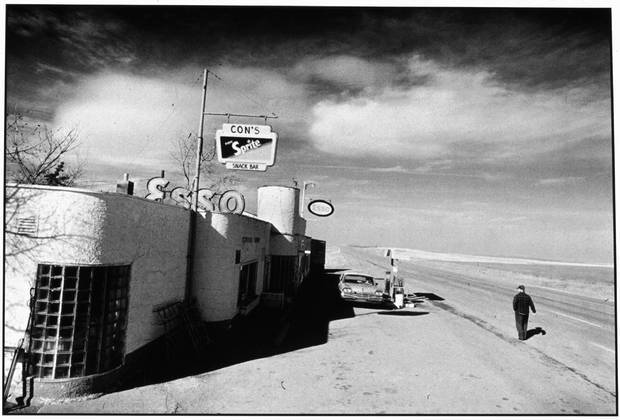
Con’s Corner: this photo of Richard Armstrong was taken in the Spring of 1990. Richard had been the gas-station attendant at Con’s Corner near Assiniboia, Sask., since he was a boy. The popular roadside station once boasted a snack bar with an ice cream counter. The business sold once or twice over the years on the condition that Richard stay on. When I met Richard, I think he was in his sixties. I distinctly remember him saying ‘It’s going to be an early spring – the crows are out hopping on the road.’ This image, now historic as the old building is gone, seemed suspended in time, even back then.
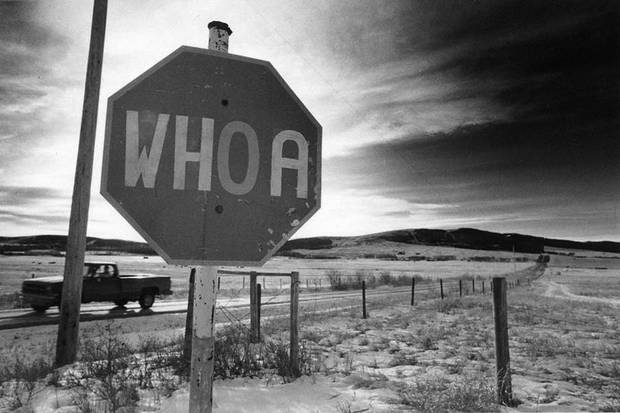
Prairie drive, somewhere between the Alberta border and Moose Jaw, Sask., 1990. The sign says it all. I purposely timed the photograph so the telephone pole obscured the pickup truck. That felt like the right thing to do at the time.
NEWSPAPER ELEGIES: MORE FROM THE GLOBE AND MAIL
